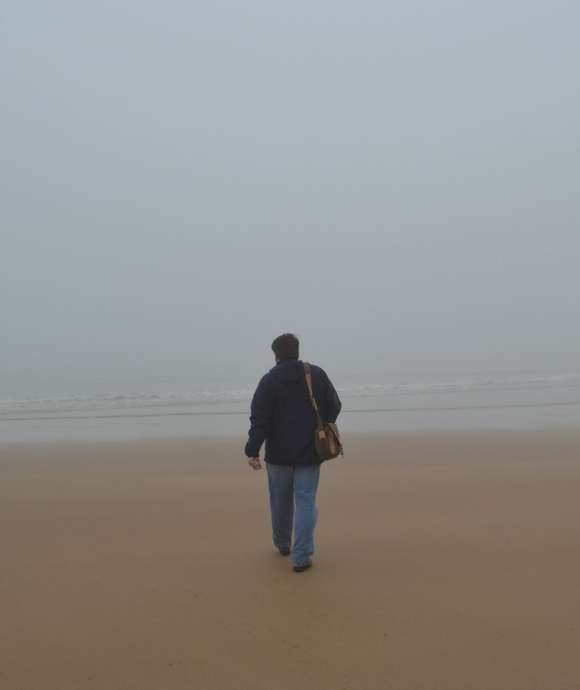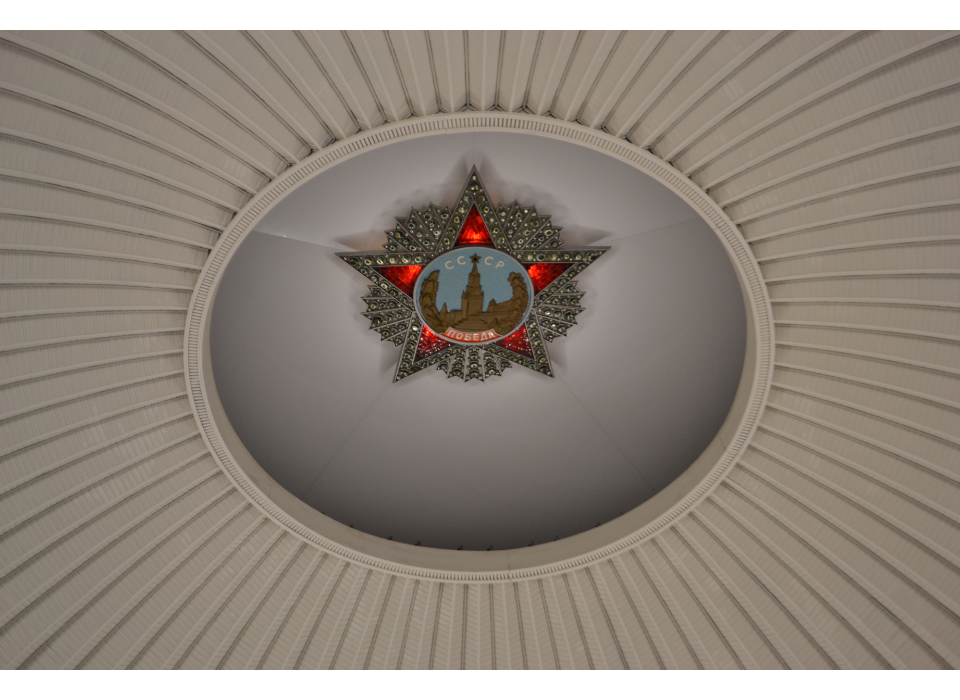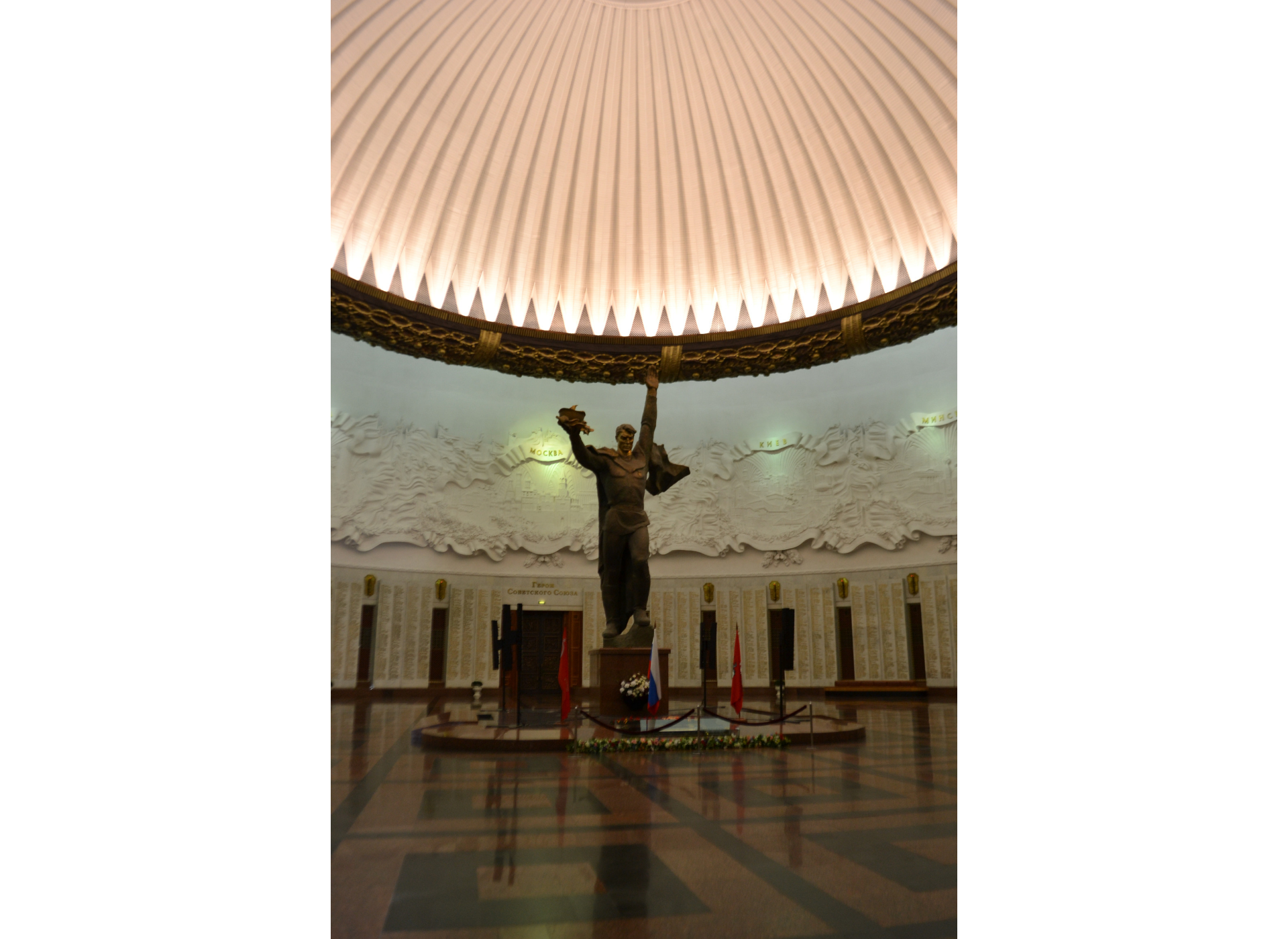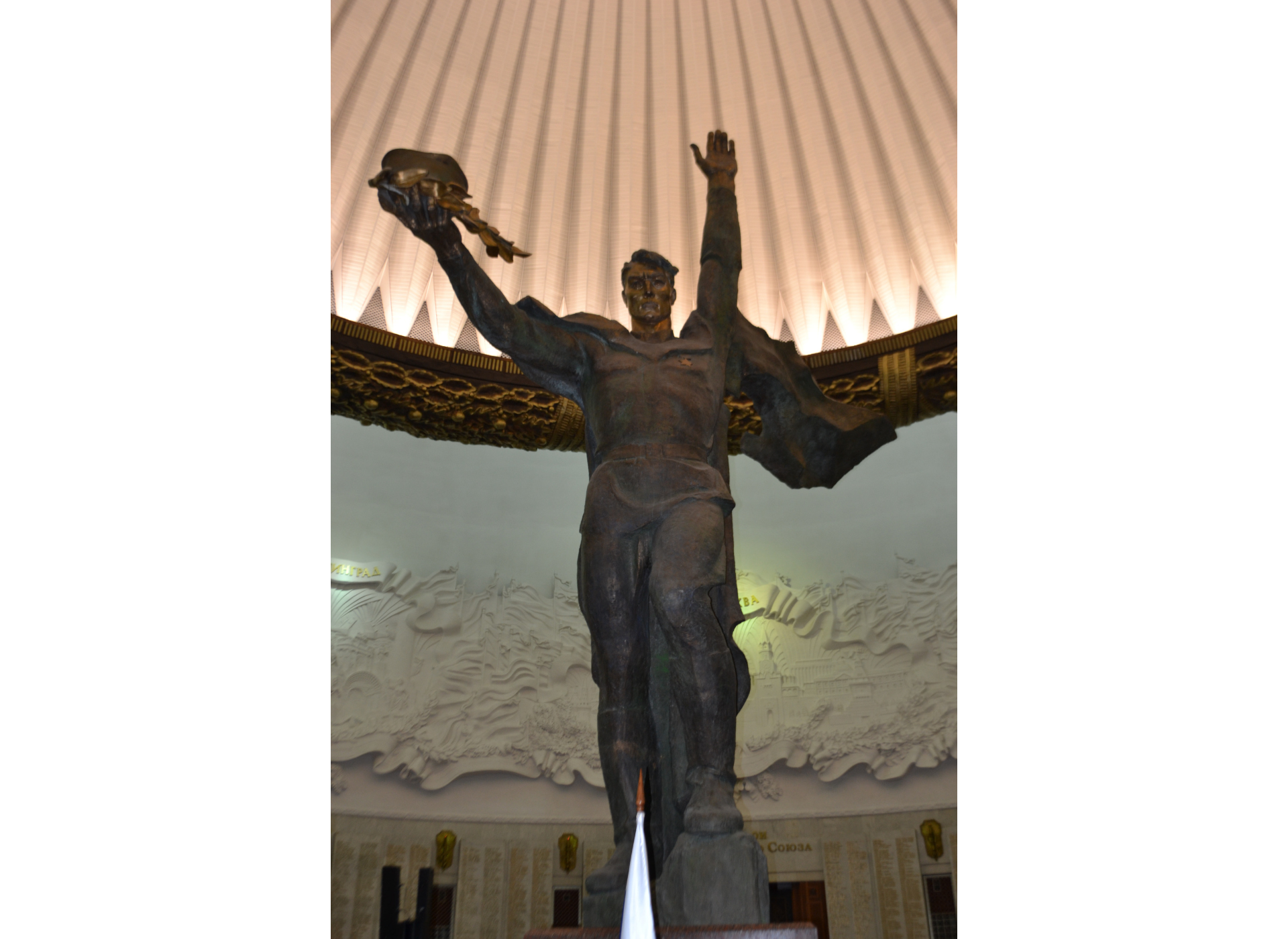In the historical profession, the study of memory is an interesting subfield because it is ultimately more about the present than the past. It is about how people today remember events, how they memorialize and interpret important historical events in the present, and how interpretations of events might change and evolve over time.
The subject of memory, the purposes behind how history is memorialized, and what is most meaningful or of lasting impact to visitors was an especially poignant feature of the Great Patriotic War Museum in Moscow. As a historian with a National WWII Museum tour, I visited there in 2013. In my previous series of six posts, I tried to show how Russian historians and curators in their national WWII museum sought to convey the entire history of the Nazi-Soviet war through a sequence of dioramas. The last post concerned the battle of Berlin in 1945, which subsequently led to the postwar division of the city and Germany itself, and the rise of the Cold War between the Soviet and American superpowers.
What was especially poignant to me, as a historian and visitor to the Great Patriotic War Museum, were the two halls meant to evoke the lasting meaning of the war. What I found most interesting was the division between the way the Soviet state is enshrined and the deeper (to me) way that the humanistic memory of the war is presented.
After entering the museum, visitors first pass by the Hall of Commanders, which is dedicated to the highest military leaders who received the Soviet Order of Victory, the highest military award given by the Soviet government (the Allied Generals Bernard Montgomery and Dwight Eisenhower received the honor in June 1945).
Beyond the Hall of Commanders, in the architectural center of the museum, is the Hall of Glory, which is dedicated to the 11,635 men and women who were declared Heroes of the Soviet Union during World War II. The Hero of the Soviet Union medal was awarded for heroic actions performed. In the Hall of Glory, somber music plays, and a statue of the Soldier of Victory dominates the space. The soldier holds his helmet in his right hand with his cape flowing behind him, while his left arm is raised straight upward. Above him, centered in the arched lights that create a dome, is the red emblem of the Order of Victory (seen in the top photo), which depicts the Spasskaya tower in the Kremlin, with Lenin’s tomb centered before it and ringed in laurel wreaths, and which indicates the ultimate meaning of the Soviet victory.
The outstanding feature of the war in this memorial is the sacrifice of military heroes in battle on behalf of the Soviet state, toward the utopian future represented by Lenin’s Bolshevik revolution. As a historian, I could write entire volumes about the ideological and philosophic brotherhood that the Stalinist dictatorship shared with Adolf Hitler’s Nazi regime, and the many ways in which the Stalinist state competed with and even surpassed the Nazi regime in violence, corruption, cruelty, barbarism, oppression, and murder. Indeed, other historians have written such books. But for the purposes of this post, I just want to make the point of my own reaction standing in the Hall of Glory in 2013: All of these heroic sacrifices, made in real blood and death, were made for an impossible dreamworld on behalf of a state that no longer exists.
And yet, that is not the entire story. I have spoken with many American WWII veterans, and have noted that whenever they are asked how they were able to overcome their fears to land on a beach against enemy fire or some other extreme action, they do not ever speak of abstract ideals—however much they believe in democracy and freedom—but of their friends. There is no denying that no nation suffered in World War II like the citizenry of the Soviet Union, and the second hall in the Great Patriotic War Museum is where the truest memories of the war are evoked for modern visitors. That will be the subject of the last post in this series.
Note: This is the seven of eight posts about the Great Patriotic War Museum in Moscow. Read Part One. Part Two. Part Three. Part Four. Part Five. Part Six. Part Eight.

"No matter one’s age, travel is a unique and exciting educational experience. In my work, I have had the opportunity to reflect on history, events, and people in the places where they experienced life. Through the viewfinder, we can not only find history and perspective, but create memory, and evoke our evergreen past."
– Keith Huxen, PhD, Senior Director of Research and History, The National WWII Museum
Keith Huxen
Keith is the former Senior Director of Research and History in the Institute for the Study of War and Democracy at The National WWII Museum.
Cite this article:
MLA Citation:
APA Citation:
Chicago Style Citation:







![Max Fuchs, New York City cantor, sings as Rabbi Sydney [sic] Lefkowitz, Richmond, VA, conducts the first Jewish services from Germany.](/sites/default/files/styles/max_650x650/public/2025-10/image1.jpg)



